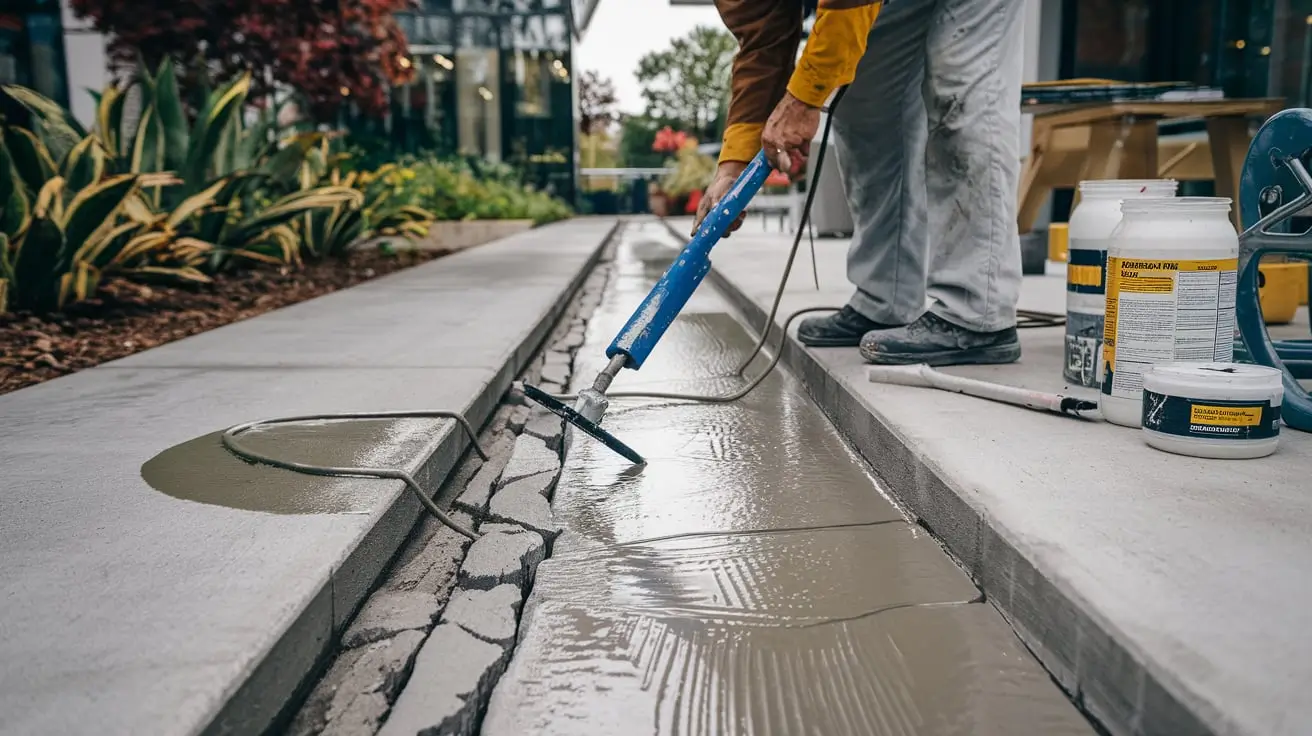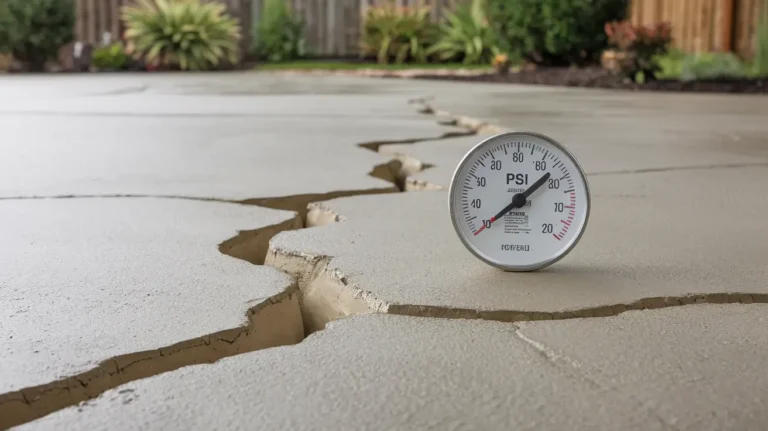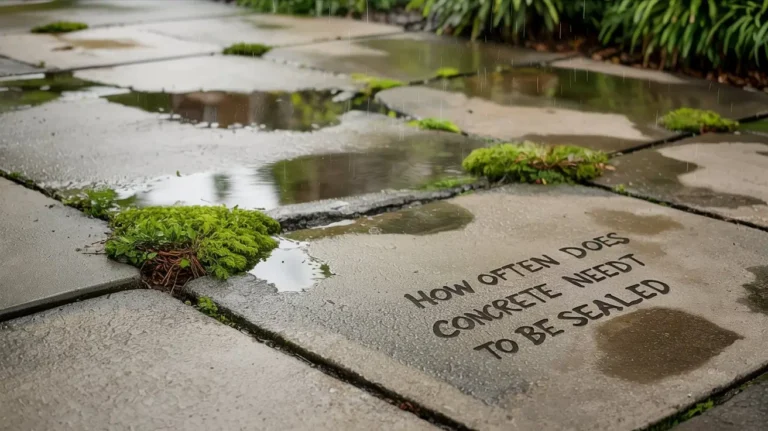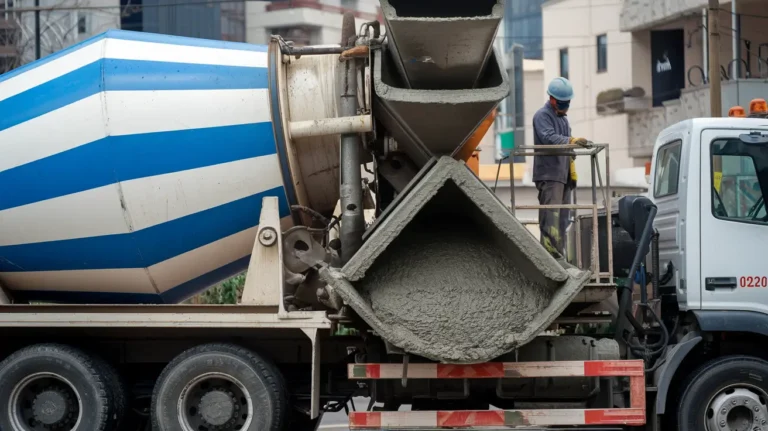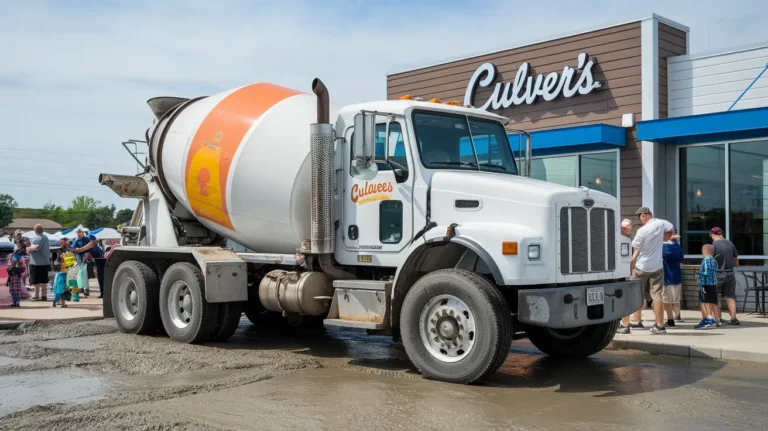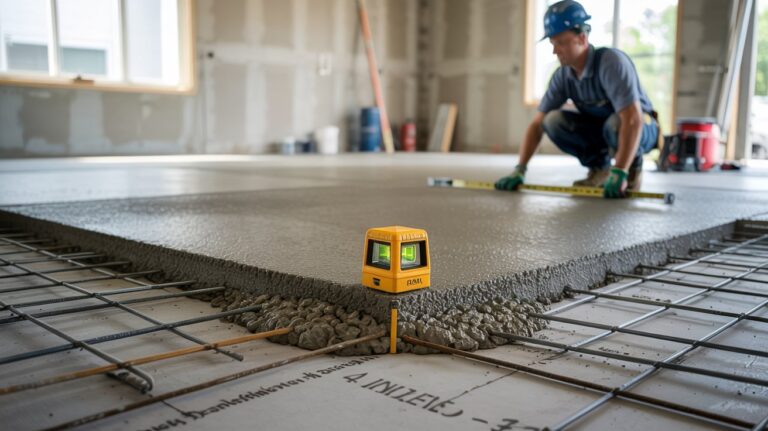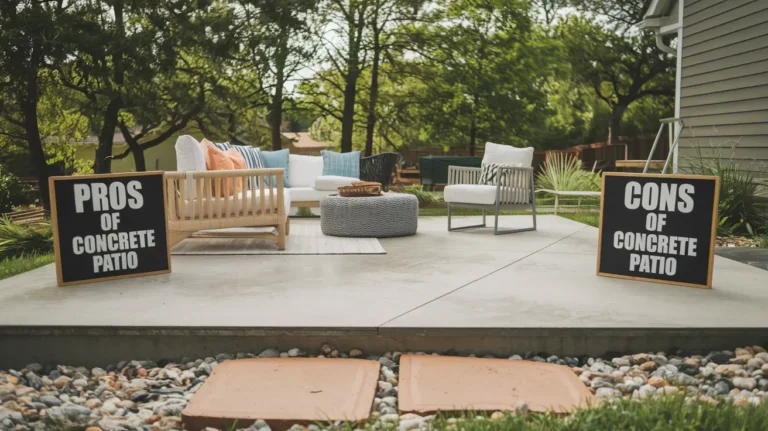How Often Should You Seal Concrete
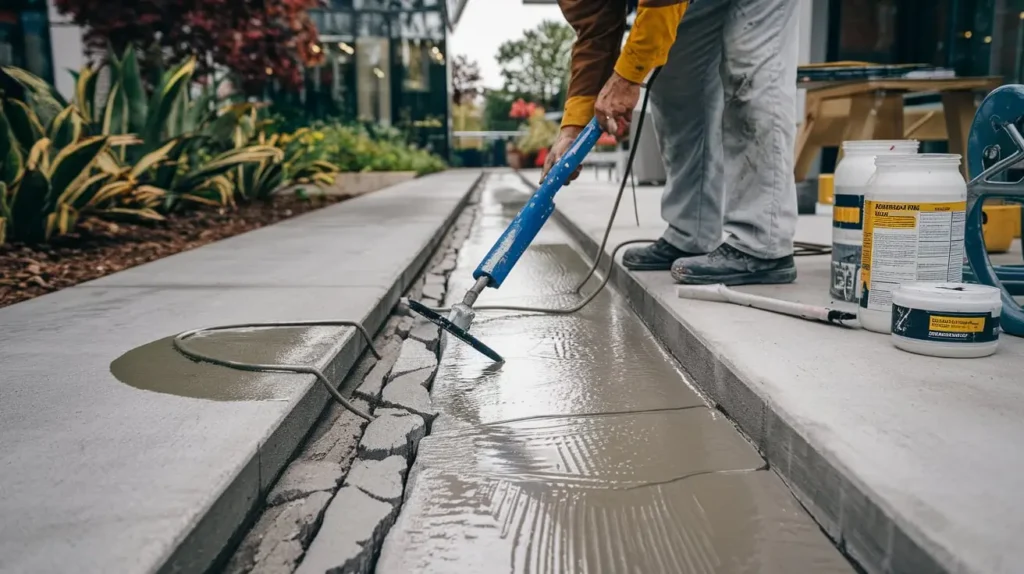
You should seal your concrete every 2-5 years to prevent cracks, pitting, and additional damage. However, the exact frequency depends on factors like the type of sealer used, weather conditions, and usage.
For instance, some sealers last up to 10 years, while others need reapplication every 2 years. Weathering, traffic, and location also affect the sealing schedule.
By understanding these factors, you’ll be able to create a tailored plan to keep your concrete surfaces in top shape – and there’s more to explore on this topic.
Factors Affecting Sealing Frequency
The answer depends on various factors that impact the sealing frequency.
The type of concrete sealer you use plays a significant role, with some sealers lasting up to 10 years and others needing reapplication every 2 years.
Weather conditions also affect the frequency, as surfaces exposed to extreme temperatures, heavy rainfall, or high humidity may require more frequent sealing.
Additionally, the type of concrete surface, such as stamped, exposed aggregate, or pavers, influences the sealing frequency.
You’ll need to weigh these factors to determine the ideal sealing schedule for your concrete surface.
When to Seal Stamped Concrete
Sealing stamped concrete requires careful planning and execution to achieve a successful outcome.
You’ll want to wait for warm and dry weather to clean and seal your stamp concrete, verifying the surface is dry and free of stains before applying a new sealant.
Clean the surface with soap and water, letting it dry completely before sealing, and remove any messier stains with solvents like xylene or rust removers.
When applying the concrete sealer, use the same type initially used, applying thin layers and allowing the first layer to dry before applying the second.
This will guarantee a smooth, even finish on your sealed concrete, whether it’s a driveway or another surface.
How to Reseal Stamped Concrete
You’re ready to reseal your stamped concrete, and vitally, you must get it right to maintain the surface’s appearance and protect it from the elements.
To guarantee a successful resealing process, follow these steps:
| Step | Guideline |
|---|---|
| Choose sealer | Use the same type of sealer initially used on the stamped concrete |
| Apply sealer | Apply a minimum of 400 square feet per gallon to achieve recommended coverage |
| Application method | Use a pump-up sprayer and paint roller to spread and smooth the sealer |
Apply thin layers of sealer, allowing the first layer to dry before applying the second, to prevent pooling and guarantee a uniform coat.
Consider hiring a professional if you’re unsure about the process or want a high-quality finish that will extend the life of your driveway’s stamped concrete.
Importance of Sealing Driveways
When you seal your driveway, you’re protecting it from abrasions and guarding against chlorides that can cause damage.
By doing so, you’re preventing cracks from forming due to water seepage and freeze-thaw cycles, which can lead to costly repairs down the line.
Proper sealing also shields your driveway from the elements, such as rain, snow, dirt, and saltwater, ensuring a longer lifespan.
Protects From Abrasions
Concrete driveways face constant exposure to abrasive forces, including tire friction, pedestrian traffic, and environmental elements like wind and water.
As a result, you’ll notice wear and tear on your driveway over time. To protect your investment, consider applying concrete sealers.
These sealers create a barrier that shields your driveway from abrasive forces, reducing wear and tear. By sealing your driveway, you’ll prevent damage from tire friction, pedestrian traffic, and environmental elements.
This protection will extend the lifespan of your driveway and maintain its appearance. Regular sealing will guarantee your driveway remains in good condition, saving you from costly repairs down the line.
Guards Against Chlorides
Sealing your driveway is a pivotal step in protecting it from the damaging effects of chlorides, which can penetrate the concrete and cause significant harm.
Chlorides can come from de-icing salts, road salt, and other substances, leading to cracks, spalling, and delamination of the concrete.
Four key reasons why sealing your driveway is paramount:
- Prevents chloride-induced damage, reducing the risk of costly repairs and replacements.
- Helps maintain the integrity of your driveway by preventing cracks and damage from chloride-based substances.
- Guarantees the longevity of your concrete driveway by reducing the risk of premature deterioration.
- Saves you money in the long run by minimizing the need for frequent and costly repairs.
Frequency of Resealing
You’ll need to weigh several factors when determining how often to reseal your concrete, including the time between coats, environmental factors, and the type of sealant used.
The frequency of resealing depends on the level of usage and exposure to harsh weather conditions, with high-traffic areas and extreme weather requiring more frequent reapplication.
Time Between Coats
The frequency of resealing your concrete depends on several factors, including usage, location, and the type of sealer used.
You’ll need to reseal every 2 to 10 years, depending on the specific conditions.
- Low-traffic areas: Reseal every 5-10 years, as these areas are less prone to wear and tear.
- High-traffic areas: Reseal every 2-3 years, as these areas require more frequent protection.
- Weather conditions: Areas with minimal freeze-thaw cycles may require less frequent resealing, while areas with harsh weather conditions may need more frequent resealing.
- Manufacturer’s instructions: Always follow the manufacturer’s recommended resealing schedule, as it may vary depending on the product and application.
Remember to apply the sealer according to the product’s instructions, usually covering 200-400 square feet per gallon.
Environmental Factors Matter
As you establish a resealing schedule, it’s vital to ponder the environmental factors that impact your concrete’s performance.
Location and usage play a significant role, with areas experiencing high usage and harsh weather conditions requiring more frequent resealing.
Environmental factors like rain, snow, dirt, saltwater, and extreme temperatures can affect the lifespan of the sealer. For instance, areas with minimal freezing and thawing cycles may require less frequent resealing, while areas with high traffic and extreme weather conditions may need to be resealed more often.
The type of sealer used, such as water-based or polyurethane sealers, also influences the frequency of resealing.
Sealant Type Counts
When selecting a concrete sealer, its type plays a significant role in determining the frequency of resealing.
You’ll find that different sealers have varying lifespans, requiring reapplication at different intervals.
Some key factors to take into account:
- Acrylic sealants: Typically need to be reapplied every 2-5 years.
- Polyurethane and resin sealers: Can last longer, often up to 10 years.
- Usage and location: High-traffic areas and harsh weather conditions require more frequent reapplication.
- Environmental conditions: Areas with minimal freeze-thaw cycles may need less frequent resealing.
Sealer Characteristics
Sealing concrete involves more than just applying a coat of protection; it’s about selecting a sealer that meets your specific needs.
When choosing a sealer, you’ll want to weigh its characteristics. Some sealers create a sheen, but you can also opt for non-slip additives to guarantee safety.
You can even tint the sealer to match or enhance your driveway’s color. Different sealers are suitable for different driveway types, and some provide UV protection, chemical resistance, and abrasion resistance.
For example, SunClear UltraProtect is ideal for high-traffic areas, while AcryClear 25 is perfect for outdoor use on stamped concrete, exposed aggregate, or pavers.
A contractor can help you determine the right sealer for your project, or you can explore resources on the SUNDEK website.
Maintenance and Upkeep
You’ve invested time and money in sealing your concrete, so it’s essential to maintain and upkeep the surface to guarantee the sealer’s longevity and performance.
Regular maintenance is pivotal to keep your concrete driveway looking its best.
- Clean the surface regularly: Remove dirt, oil, and other substances that can damage the sealer or concrete.
- Avoid using harsh chemicals: Never use acidic substances or abrasive cleaners, as they can strip away the sealer or etch the concrete.
- Fix cracks and joints: Seal any cracks or joints to prevent water from seeping in and causing damage.
- Reapply sealer as needed: Re-seal your concrete every 1-3 years, depending on the type of sealer and environmental conditions, to keep it looking like new.
Winter Maintenance Tips
Winter weather can be harsh on your sealed concrete driveway, but with the right maintenance strategies, you can minimize damage and keep your driveway looking its best. If you live in an area with frequent snowfall, crucial to adopt safe and effective snow removal techniques.
| De-Icing Methods | Effectiveness | Environmental Impact |
|---|---|---|
| Epsom Salt | Ineffective | Harmful to vegetation and pets |
| Rock Salt | Effective | Harmful to vegetation and pets |
| Calcium/Magnesium | Effective | Low environmental impact |
| Baking Soda | Ineffective | Leaves residue on concrete surfaces |
| Sand | Ineffective | Low environmental impact |
When shoveling snow, use a curved or angled blade to scoop up snow, and push the snow forward rather than lifting it. If you prefer using a snow blower, clear a small area first to get a feel for the machine, and keep the chute directed away from people and pets.
Benefits of Regular Sealing
Regular maintenance is key to extending the life of your concrete surfaces, and sealing plays a crucial role in this process.
By sealing concrete every 2-5 years, you can prevent cracks, pitting, and additional damage.
- Protection from damage: Sealing prevents standing water, caustic chemicals, and normal wear-and-tear from causing harm.
- Weather resistance: Regular sealing provides a barrier against extreme weather conditions, allowing concrete to “breathe” and preventing water vapor from getting trapped internally.
- Appearance and safety: Sealing maintains the appearance and integrity of your concrete floors, driveways, and patios, while also providing more traction and reducing the risk of slip-and-fall injuries.
- Longer lifespan: With years of experience, experts recommend regular sealing to keep your concrete surfaces in good shape and last longer.
Frequently Asked Questions
How Long Does Sealer Last on Concrete?
You’re wondering how long that sealer will last on your concrete? Well, it’s not forever, but up to 10 years, depending on sealant durability, concrete porosity, and weather impact – with solvent-based sealers outlasting water-based ones, of course!
Is Sealing Concrete Necessary?
You need to seal concrete to guarantee its protection, enhance its surface, and provide moisture resistance, ultimately boosting its aesthetic appeal, as unsealed concrete is prone to degradation, cracking, and color fading, leading to costly repairs.
Can You Seal Concrete Too Much?
You risk overprotection risks by applying excessive coating, leading to sealant buildup, which can cause peeling, flaking, and trapping moisture, ultimately deteriorating the concrete; unnecessary applications lead to a sticky surface, making it prone to tracking and staining.
How Do You Know if Concrete Needs to Be Sealed?
You know concrete needs to be sealed if you notice visible cracks, surface stains, or water absorption, which can cause fading discoloration, or if the surface appears dull and faded, indicating porosity issues.
Conclusion
As you stand watch over your concrete domain, remember that sealing is key to its longevity. Like a medieval knight armor-plating his steed, you’re shielding your concrete from the relentless siege of the elements.
By resealing regularly, you’ll keep your concrete strong, protected, and looking its best. So, grab your trusty sealer and get to work – your concrete is counting on you!
